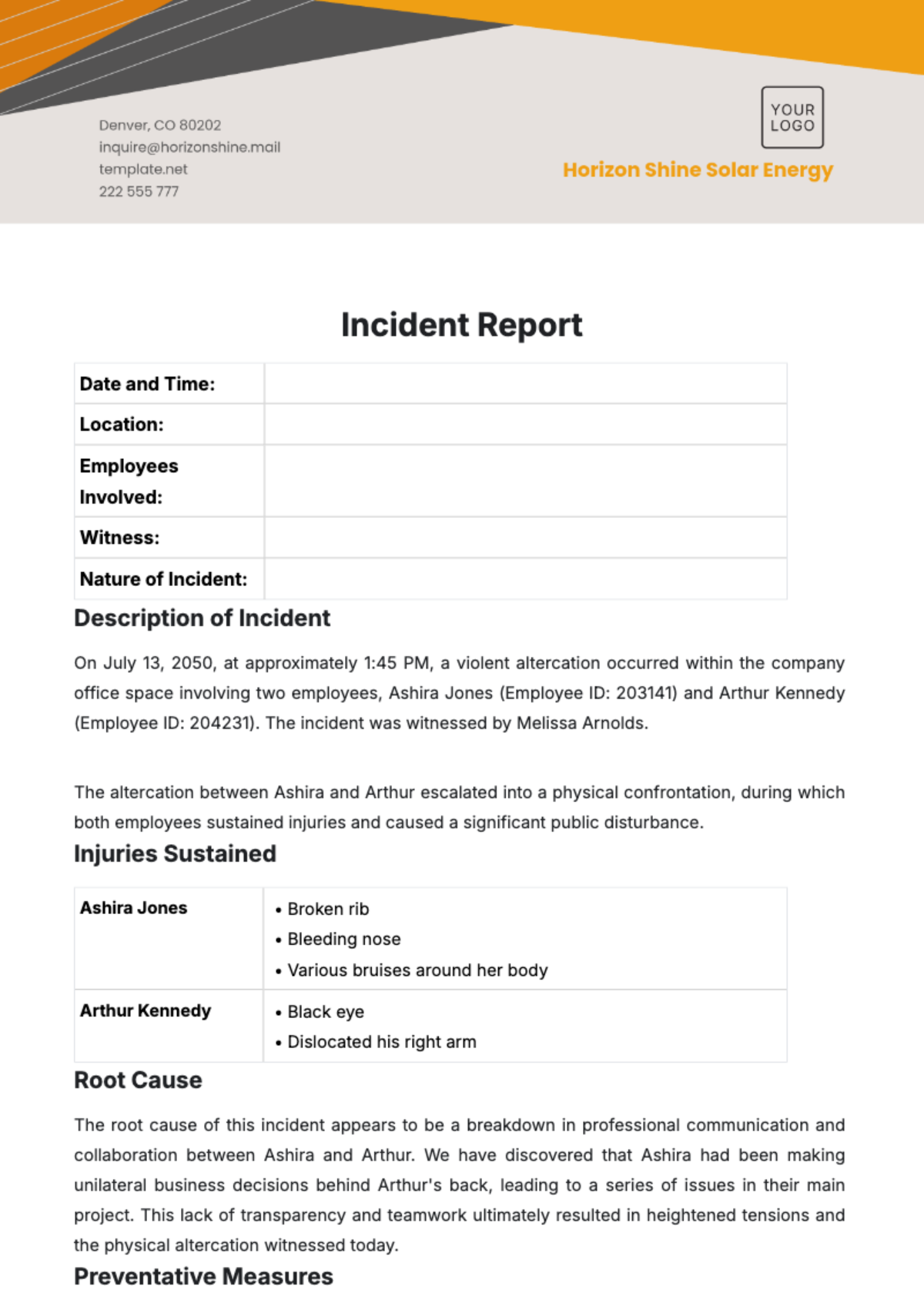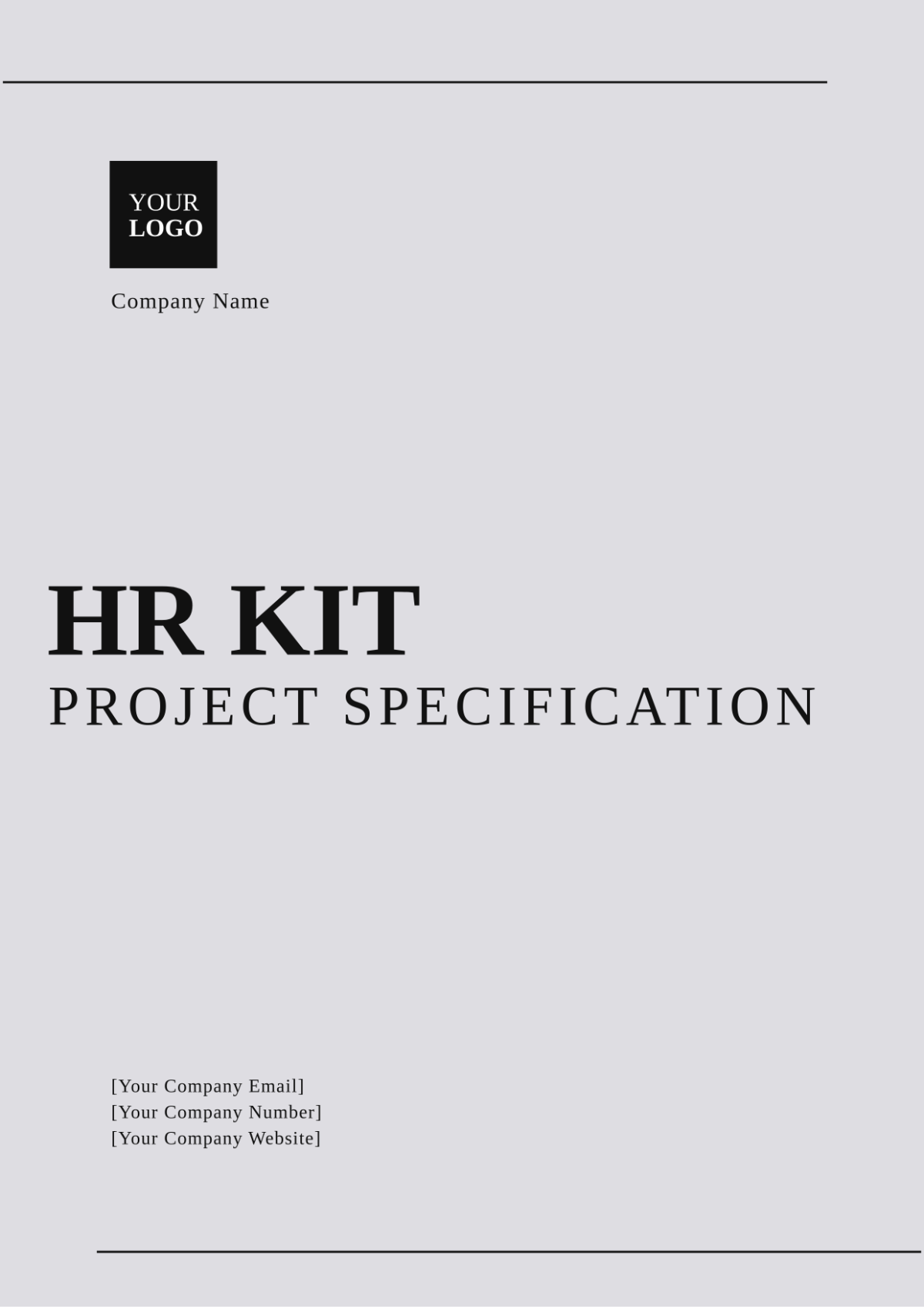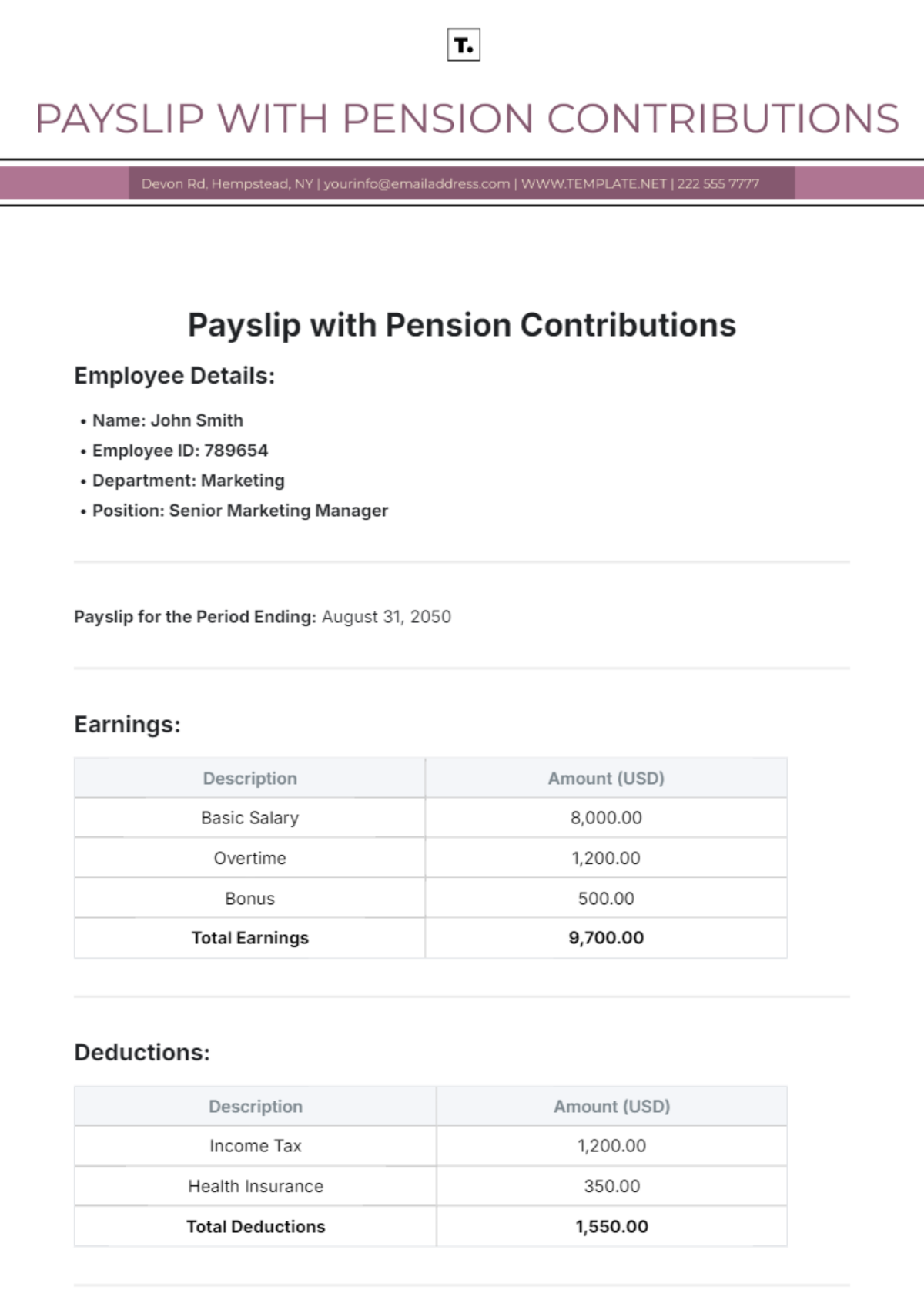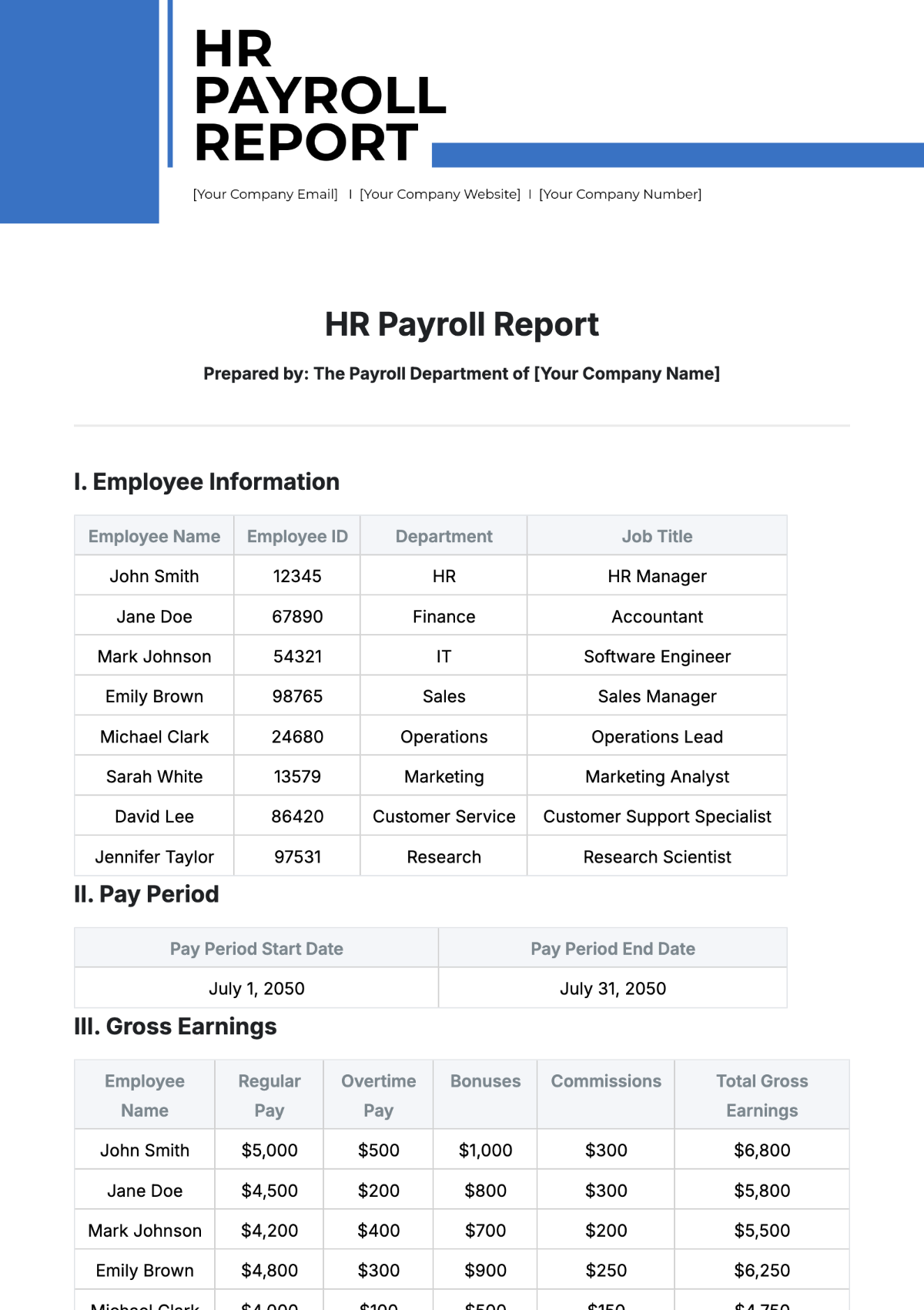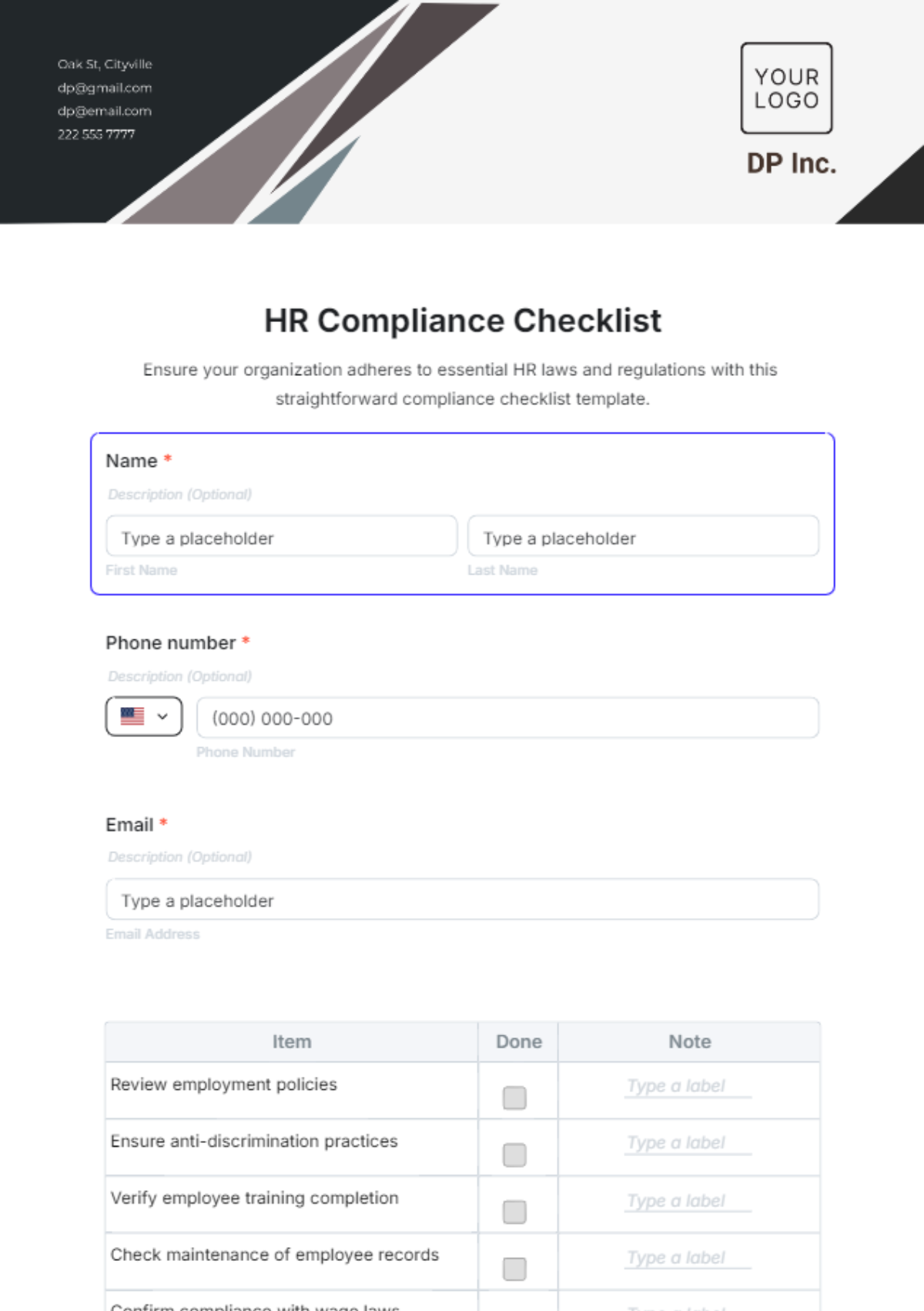Diversity and Inclusion in Remote Work Best Practices Guide HR
1. Introduction
1.1 Purpose of the Guide
Welcome to the Diversity and Inclusion in Remote Work Best Practices Guide, designed to provide guidance and strategies for fostering an inclusive and diverse remote work environment at [Your Company Name]. This guide is intended to serve as a comprehensive resource for HR professionals, managers, and employees who are committed to promoting diversity and inclusion in a remote work setting. It outlines key principles, best practices, and practical steps to build a workplace that values and celebrates differences.
1.2 Importance of Diversity and Inclusion in Remote Work
In today's globalized world, remote work has become a vital part of how organizations operate. However, with this shift, it's crucial to recognize that diversity and inclusion remain just as critical, if not more so, in remote work environments. Embracing diversity and fostering an inclusive culture in remote teams enhances creativity, innovation, and productivity. It also ensures that all employees, regardless of their location, feel valued and have equal opportunities to contribute and grow within the company.
2. Defining Diversity and Inclusion
2.1 Definitions of Diversity and Inclusion
Diversity refers to the variety of characteristics and experiences that make each individual unique. These characteristics can include but are not limited to race, ethnicity, gender, age, sexual orientation, disabilities, religious beliefs, and cultural background. Diversity encompasses all the differences that contribute to the richness of our workforce.
Inclusion goes beyond mere diversity. It is the practice of creating an environment where all individuals feel welcomed, respected, and valued for their unique perspectives and contributions. Inclusion means ensuring that every employee, regardless of their background or identity, has equal access to opportunities, resources, and decision-making processes.
2.2 Why They Matter in Remote Work
In remote work environments, the physical boundaries of a traditional office are replaced by digital ones. As a result, the potential for isolation and disconnection can be more pronounced. Diversity and inclusion become even more critical in this context to bridge geographical, cultural, and linguistic gaps. They help remote teams collaborate effectively, promote a sense of belonging, and unlock the full potential of every team member, regardless of where they are located.
3. Remote Work and Diversity & Inclusion
3.1 How Remote Work Impacts Diversity and Inclusion Efforts
Remote work presents unique challenges and opportunities for diversity and inclusion efforts. On one hand, it allows organizations to tap into a broader talent pool, potentially increasing diversity. On the other hand, it can lead to feelings of isolation and disconnect if not managed effectively. We'll explore these dynamics in this guide to help you navigate the complexities of remote work while promoting diversity and inclusion.
3.2 Potential Challenges and Opportunities
Challenges | Opportunities |
|---|---|
Lack of face-to-face interactions | Access to global talent |
Time zone differences | Flexibility for diverse work arrangements |
Communication barriers | Emphasis on digital inclusion |
Potential for exclusion | Fostering a culture of trust and autonomy |
4. Creating a Diverse Remote Workforce
4.1 Recruitment and Hiring Best Practices
To build a diverse remote workforce, it's essential to start at the recruitment and hiring stage. This involves implementing strategies that attract candidates from diverse backgrounds and ensuring an unbiased selection process. In the subsequent sections, we'll delve into the specific practices and policies that can help you achieve this goal.
4.2 [Your Company Name] Diversity Statement and Goals
At [Your Company Name], we are committed to promoting diversity and inclusion in all aspects of our organization. Our Diversity Statement outlines our dedication to creating a workplace that values differences and embraces inclusivity. Additionally, we have set clear diversity goals and benchmarks to measure our progress in building a diverse remote workforce.
4.3 Inclusive Job Descriptions
In our job descriptions, we prioritize inclusive language and emphasize our commitment to diversity and inclusion. We encourage potential candidates to bring their unique backgrounds and perspectives to our team.
4.4 Avoiding Bias in Remote Interviews
To ensure fair and unbiased remote interviews, we have implemented guidelines and training for interviewers. These guidelines help interviewers recognize and eliminate unconscious biases that may influence hiring decisions.
5. Fostering Inclusion in Remote Teams
5.1 Strategies for Building Inclusive Teams
Creating an inclusive remote team involves deliberate strategies that ensure everyone feels valued and can contribute their best. Some key strategies include:
Encouraging open and respectful communication
Promoting psychological safety for all team members
Establishing clear team goals and expectations
5.2 Encouraging Diversity in Cross-Functional Teams
Cross-functional teams are a hallmark of successful remote work. Encourage diversity in these teams by:
Proactively seeking diverse perspectives when forming teams
Recognizing and valuing the unique skills each team member brings
Promoting cross-cultural awareness and appreciation
5.3 Effective Communication and Collaboration Tools
Selecting the right communication and collaboration tools is crucial. Consider tools that:
Facilitate real-time communication
Support video conferencing for face-to-face interactions
Offer accessibility features for all team members
5.4 Addressing Time Zone and Cultural Differences
Time zone and cultural differences can impact remote teams. Address these challenges by:
Establishing flexible work hours when possible
Encouraging asynchronous communication when appropriate
Promoting cultural sensitivity and awareness among team members
6. Training and Education
6.1 Diversity and Inclusion Training for Remote Teams
At [Your Company Name], we prioritize ongoing training for our remote teams. Our diversity and inclusion training program includes modules on:
Unconscious bias awareness
Cross-cultural communication
Inclusive leadership skills
6.2 Customized Training Programs
We understand that one size does not fit all. Therefore, we offer customized training programs tailored to the unique needs and challenges of our remote teams. These programs are designed to address specific diversity and inclusion goals.
6.3 [Your Company Name] Learning Resources
Our company provides a wealth of learning resources to support diversity and inclusion efforts, including:
E-learning courses
Webinars and workshops
Access to diversity and inclusion experts
6.4 Encouraging Continuous Learning
We encourage all team members to engage in continuous learning by:
Setting aside time for self-directed learning
Promoting participation in relevant conferences and events
Recognizing and rewarding efforts in diversity and inclusion education
6.5 [Your Company Name] Learning and Development Opportunities
To support career growth, we offer a range of learning and development opportunities, including:
Leadership development programs
Diversity and inclusion certifications
Mentorship programs
7. Managing Remote Teams with Diverse Members
7.1 Inclusive Leadership Practices
Our leaders at [Your Company Name] embrace inclusive leadership practices by:
Setting a strong example of inclusive behavior
Encouraging diversity of thought and perspectives
Actively seeking input from team members
7.2 Leading by Example
Leaders lead by example by demonstrating the values of diversity and inclusion in their own actions, decisions, and interactions. This sets the tone for the entire organization.
7.3 Empowering Diverse Voices
We empower diverse voices by creating platforms for team members to share their ideas, experiences, and concerns. This includes regular forums for feedback and suggestions, as well as open-door policies.
7.4 Addressing Conflicts and Challenges
Conflict is a natural part of teamwork. We address conflicts by:
Providing conflict resolution training
Encouraging open and respectful dialogues
Seeking mutually beneficial solutions
7.5 Conflict Resolution Guidelines
Our conflict resolution guidelines outline a structured approach for addressing conflicts, ensuring that they are resolved in a fair and inclusive manner.
7.6 Promoting Inclusive Feedback
We promote inclusive feedback by encouraging constructive criticism and suggestions. This helps us continuously improve our diversity and inclusion initiatives.
7.7 Supporting Career Growth and Development
At [Your Company Name], we believe in supporting the career growth and development of every team member. Our programs include:
[Your Company Name] Career Pathways
Mentorship and Coaching Programs
8. Measuring and Reporting
8.1 Metrics and Key Performance Indicators (KPIs)
To gauge the effectiveness of our diversity and inclusion efforts, we track various metrics and KPIs. These include:
Representation of diverse groups within the organization
Employee satisfaction and engagement scores
Diversity-related incidents and resolutions
8.2 [Your Company Name] Diversity Metrics Dashboard
Our Diversity Metrics Dashboard provides real-time access to key diversity and inclusion data, making it easier to track progress and identify areas for improvement.
8.3 Tracking Progress Towards Inclusion Goals
We set annual inclusion goals and measure progress toward achieving them. This helps us stay accountable and ensures continuous improvement in our diversity and inclusion initiatives.
8.4 Annual Inclusion Progress Reports
Each year, we produce an Annual Inclusion Progress Report that highlights our achievements, challenges, and plans for the future. This report is shared with all team members and stakeholders.
8.5 Transparency and Accountability
Transparency is a core principle in our diversity and inclusion efforts. We maintain open channels for reporting incidents or concerns related to diversity and inclusion and take them seriously.
8.6 Reporting Channels and Feedback Mechanisms
We provide multiple channels for reporting diversity and inclusion issues, including anonymous reporting options. Additionally, we actively seek feedback from team members to drive improvements in our initiatives.
9. Remote Work Policies and Accommodations
9.1 Flexible Work Arrangements
At [Your Company Name], we recognize the importance of flexibility in remote work. Our flexible work arrangements include options such as:
Flexible working hours
Compressed workweeks
Part-time remote work
9.2 Remote Work Policy Overview
Our Remote Work Policy provides a comprehensive overview of our remote work guidelines, including eligibility criteria, expectations, and the process for requesting remote work arrangements.
9.3 Requesting Flexible Work Options
Team members interested in flexible work options can request them through our HR department. We evaluate each request on a case-by-case basis to ensure alignment with business needs and employee well-being.
9.4 Accessibility and Accommodations
We are committed to providing a remote work environment that is accessible to all team members, including those with disabilities. Our accessibility resources include:
Accessible communication tools and platforms
Training on accessible technology
Accessibility support services
9.5 Requesting Accommodations
Team members requiring accommodations for remote work can request them through our HR department. We work closely with individuals to identify and implement appropriate accommodations.
9.6 Remote Work Guidelines
Our Remote Work Guidelines outline expectations for remote work behavior, including:
Data security and privacy
Use of company equipment and resources
Communication and collaboration expectations
Maintaining a healthy work-life balance
Compliance with all relevant company policies
10. Employee Resource Groups (ERGs)
10.1 How to Establish ERGs in a Remote Environment
Establishing Employee Resource Groups (ERGs) in a remote environment is a key strategy for fostering diversity and inclusion. Here's how to get started:
Identify passionate and committed individuals who will lead ERGs
Define the purpose and goals of each ERG
Establish communication channels and platforms for ERG members
10.2 ERG Formation Guidelines
Our ERG Formation Guidelines provide a step-by-step process for creating and maintaining ERGs. They include:
Guidelines for leadership and governance
Support for ERG initiatives and events
Measures for evaluating ERG impact
10.3 ERG Support and Resources
To ensure the success of ERGs, we offer a range of support and resources, including:
Funding for ERG initiatives
Access to diversity and inclusion experts
Promotional support for ERG events
10.4 [Your Company Name] ERG Support Programs
Our company is committed to supporting ERGs through dedicated programs designed to enhance their effectiveness. These programs include mentorship, coaching, and leadership development opportunities for ERG leaders.
11. Case Studies
Case | Description |
|---|---|
CASE 1: | [Competitor Company Name] expanded its remote workforce by implementing targeted diversity recruitment strategies. By embracing remote work, the company attracted talent from underrepresented groups across the globe, resulting in a more diverse and innovative team. |
CASE 2: | [Competitor Company Name] implemented regular virtual inclusion workshops and cross-cultural training for its remote teams. This initiative not only improved cultural awareness but also led to more inclusive and effective collaboration. |
12. Conclusion
12.1 Recap of Key Points
In this guide, we've explored a wide range of strategies and best practices for promoting diversity and inclusion in a remote work setting. Key takeaways include the importance of inclusive leadership, the value of flexible work arrangements, and the role of ERGs in fostering a sense of belonging.
12.2 Encouragement for Implementation
We encourage all team members and leaders to actively participate in our diversity and inclusion initiatives. By embracing diversity and fostering inclusivity, we not only enhance our workplace but also drive innovation and success in our remote teams.
12.3 [Your Company Name] Commitment to Diversity and Inclusion
At [Your Company Name], diversity and inclusion are not just words; they are integral to our culture and values. We are committed to continuously improving our diversity and inclusion efforts to create a remote work environment where every team member can thrive.
13. Glossary
To facilitate clear communication, we have compiled a glossary of key terms related to diversity and inclusion. This glossary provides definitions and explanations for commonly used terms in this guide.
Terms | Definition/Explanations |
|---|---|
Diversity: | The variety of characteristics and experiences that make each individual unique, such as race, gender, age, and cultural background. |
Inclusion: | Creating an environment where all individuals feel welcomed, respected, and valued for their unique perspectives and contributions. |
Remote Work: | A work arrangement where employees work from locations outside the traditional office, often from their homes or other remote locations. |
ERG (Employee Resource Group): | A voluntary, employee-led group formed to support specific communities or interests within an organization. |
14. Contact Information
For any questions, concerns, or requests related to diversity and inclusion at [Your Company Name], please reach out to our dedicated Diversity and Inclusion (D&I) Team:
Contact Name: [Your Name]
Contact Email: [Your Company Email]
Contact Phone Number: [Your Company Number]
We are here to support you in your diversity and inclusion efforts. Contact our D&I Team directly for guidance, advice, or collaboration opportunities.
15. Feedback and Suggestions
We value your input and invite you to provide feedback and suggestions to help us enhance this guide. Your feedback is instrumental in making this resource even more effective in promoting diversity and inclusion in our remote work environment.
15.1 How to Provide Feedback:
Email your suggestions to [Your Company Name] HR at [Your Company Email].
Share your feedback through our anonymous feedback channels available on our company intranet.
Thank you for your commitment to improving diversity and inclusion within our organization, and for your continued support in making our remote work environment inclusive and welcoming to all.


